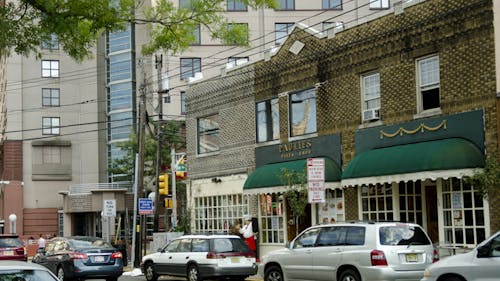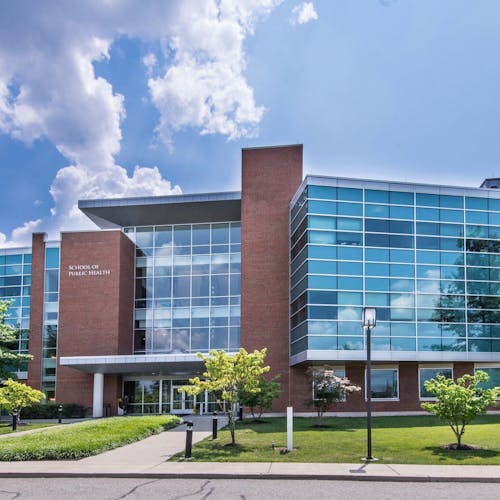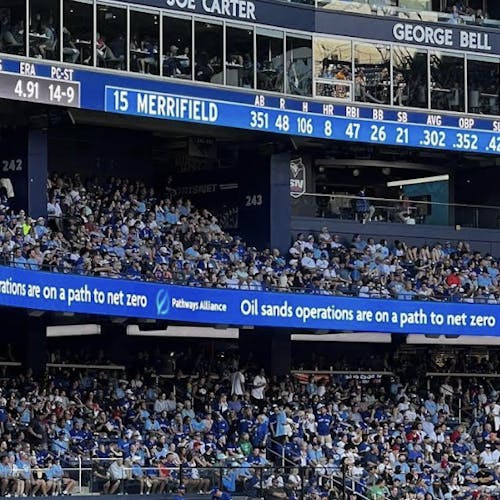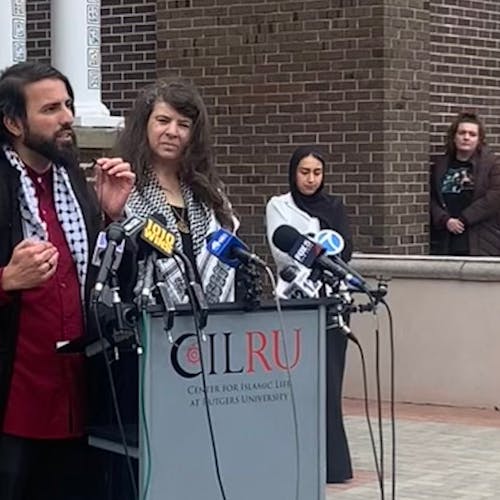Faculty, students create digital history of New Brunswick

Instead of assigning a lengthy final paper his students would probably forget about after winter break, Andrew Urban asked students to use their knowledge for the community.
Urban, assistant professor in the Department of American Studies and the Department of History, created the project, “Mapping New Brunswick Memories,” a collaboration with Chris Rzigalinski.
“Mapping New Brunswick Memories” uses oral histories from interviews of New Brunswick residents to create five virtual tours of the city on the website, MappingNewBrunswickMemories.org.
The interviews were previously recorded as part of a series in collaboration with the George Street Playhouse show, “Our Town.”
“Projects like this are incredibly important for Rutgers,” Urban said. “They demonstrate to students during the four years that they are at Rutgers [and] they are residents of New Brunswick.”
Urban and Rzigalinski, coordinator of the American Studies Media Culture Program, first worked on the idea with the Collaborative Center for Community-Based Research and Service.
The city’s history of Hungarian immigration, Puerto Rican migration and Mexican neighborhoods surprised many students, Urban said.
The development of the Johnson & Johnson headquarters and the reshaping of downtown were also important changes that shaped the city, he said.
“We really wanted our students to think about some of the more critical, at times challenging, issues faced,” he added.
Urban emphasized the project was not intended just to be celebratory, but also a critical study.
This Friday, the team will celebrate its efforts by officially launching the website with the George Street Playhouse on the College Avenue campus.
“The foundation of the project is residents’ interviews from the George Street Playhouse’s oral history archive,” Rzigalinski said. “We hope to generate a lasting relationship with the community partners and continue the project.”
Visitors of the site have access to five virtual tours: Serving Hub City, Small Group Tour, Tracing the Revitalization of New Brunswick Through Gentrification, Uniting New Brunswick and Mapping New Brunswick Through Inclusion and Exclusion.
Modeled on Google Maps, digital maps of the city appear once visitors select a tour, and the site will exhibit archival and contemporary images side by side to show changes over time, Rzigalinski said.
Visitors can also listen to student-made audio recordings giving the historical facts of a site and then learn more through the residents’ interviews.
Urban said he is working with Rzigalinski to prepare a “living guestbook” for the website launch on Friday, where guests who are long-term residents of New Brunswick can add their memories of the city to the archive.
Rzigalinski especially credited the creativity and effort of the students.
“They have put in hard work, and personally, I am inspired by the way they are starting to see themselves as integral members of the city’s community,” he said.
Other collaborators include Jim Jack, director of education at the George Street Playhouse, and Francesca Giannetti, digital humanities librarian.
Briana Lockman, a School of Arts and Sciences junior taking Rzigalinski’s class, said her biggest challenge was turning her research on Jeffrey Vega, president of New Brunswick Tomorrow, into a final narrative.
“I wanted it to accurately capture what Vega talked about in his interview, as well as introduce some new points and conclusions about New Brunswick and the people who live there,” she said via email.
After heavily revising four different drafts, Lockman was finally able to create an accurate and fitting portrayal.
“I learned so much about the city by doing it. It caused me to be more sensitive and aware of my surroundings downtown,” she said. “I noticed things that I’d overlooked the countless times that I’d been downtown before.”
Sarah Rodriguez, a School of Arts and Sciences junior, said the most rewarding part of the project has been seeing all the different parts come together in the end.
Her group delved into the social history that exists in the space between College Avenue and Easton Avenue, which she found particularly interesting.
“The city of New Brunswick has its pockets full of culture across the city, not just in the Rutgers area,” she said. “[It] gives the city we go to school in so much more depth than I think students take the time to realize.”
Editor's Note: A previous version of this article incorrectly stated the URL for the “Mapping New Brunswick Memories” project was MappingNewBrunswickMemories.com.



